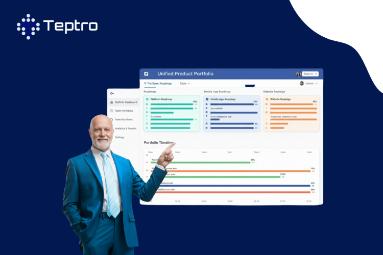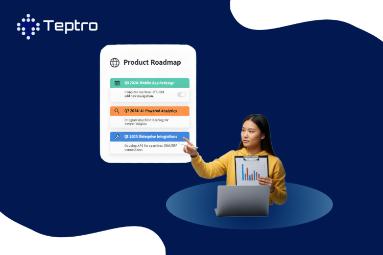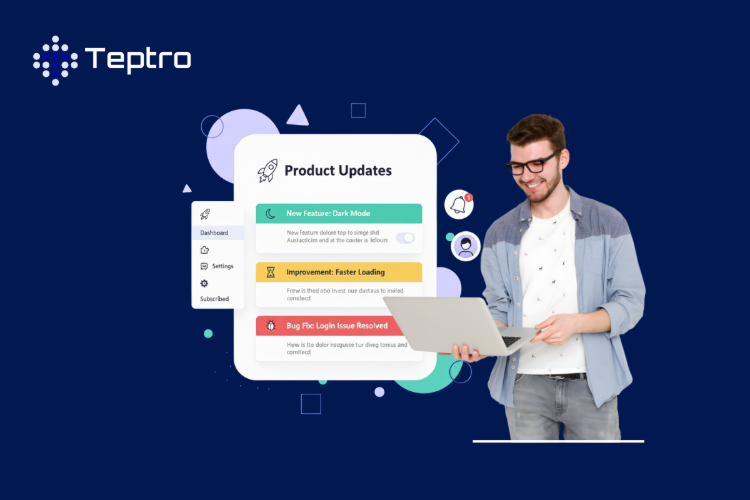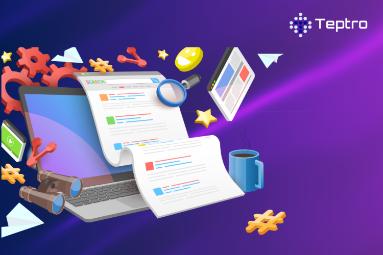How to Enhance SaaS User Experience with Customer Feedback System?
Collecting effective consumer feedback is crucial in improving SaaS products’ user experience. However, leveraging a centralized platform like a customer feedback system can assist SaaS companies in capturing valuable insights from users to boost customer satisfaction, improve product interface, and more. Moreover, accessing user insights lets you identify bugs and hot factors to ensure your software offers a seamless user experience. In addition, implementing an effective customer-centric strategy through a customer feedback system, like collecting feedback through a customer feedback management tool, is vital to meeting competitive trends in the SaaS market. This aids in aligning the company’s strategies with users’ needs and expectations effortlessly. By consistently improving products, businesses can effectively retain existing users and onboard new consumers. Sounds interesting? In this blog, we will explore more aspects, highlighting ways to improve user experience for SaaS-based products by using robust features of customer review management. Why Do Businesses Need to Elevate User Experience with Customer Feedback System? Whether it is a website, app, or software, improving user experience holds great importance. If users begin to experience inconvenience with your product continuously , they might shift to other competitors, leaving your brand frustrated. To elevate effective experience, companies must look closely into customers’ needs, preferences, expectations, and pain points, which can be done through a customer review management solution. In addition, varied aspects dictate the success of a user experience, such as information architecture, technical aspects of the features page, click-through buttons, accessibility, usability, interaction through design, and more. Moreover, it is crucial to understand which facet of the UX process your product lacks and how consumers feel through an organized customer feedback system. We have listed below a few essential factors to help you determine the importance of improving user experience through user feedback analysis software. 1. A thoroughly thought-out and planned user experience tends to foster positive interactions. When users begin to enjoy interacting with or using your product on a daily basis , companies are more likely to drive better customer satisfaction and retention and boost conversion rates effortlessly. 2. By offering a practical customer experience, businesses can enhance productivity and develop a strategy to address customers’ recurring problems over time. Top Methods to Improve User Experience Through Customer Feedback System The user experience on your software must appeal to or meet customers’ preferences through a customer feedback system. This is why any business plan is initiated by collecting diverse information on demographics associated with customers or target audiences. Understanding what works for your customers and what does not collect feedback on specific parameters is essential through a customer feedback management tool. However, user experience needs to be changed or updated consistently by acquiring actionable insights through the central dashboard of user feedback analysis software. When you have access to factors like complaints about usability, potential bugs, or suggestions for introducing new features, making the design more intuitive and more aspects reduces the chances of guesswork in the strategy. In short, your customers will tell you this is what we want and expect from your brand through the customer review management platform by using customer feedback system. However, some customers’ feedback may be contradictory, confusing, or irrelevant. Product managers need to prioritize , categorize , and evaluate varied feedback to identify themes for the roadmap. Sounds perplexing? Don’t worry. To help you consistently deliver practical user experience, we have listed below a few robust methods that can be incorporated with customer feedback system easily . 1. Implement Consultative Approach Enhancing user experience is about delivering convenience to customers by meeting their needs and preferences. For this, businesses need to understand customers’ habits and skills through research and continuously gather feedback through a customer feedback system. Furthermore, consult your product’s current and potential user base to identify problems that users experience and how you can address a set of technical and other aspects. In addition , the user experience design must be thoroughly evaluated using qualitative and quantitative data about the likelihood of user interaction with your product. This can be done using a range of strategies and user feedback analysis software. You can also use surveys and polls to understand the missing aspects of your product through customer feedback system. Remember, launching a product that the audience is already looking for has greater chances of acquiring high sales and performance than convincing them of entirely new concepts they are entirely clueless about . 2. Capture User’s Attention When considering onboarding new users, it is vital to grab their first impression. You must focus on directing new customers to simplified steps to successfully onboard to the software or log-in steps . Assist them in their initial stage of simplifying their journey of using your product. For instance, you can provide personalized emails with detailed support, offer tutorial videos, and more. Suppose your product includes a complex procedure, such as enterprise-based software or an app. In that case, you must consider offering detailed documentation or clear steps through varied formats as customers go through the product flow. In addition , you can add relevant links to simplify their experience. And, often, enterprise-based users are more likely to be satisfied with the products that offer instructive documents, content, or videos when onboarding new software or applications. On the other hand, for B2C customers, offering a consistent flow with intuitive design and seamless content throughout the product is important , as these customers won’t read lengthy documentation to start their journey. Regardless of your target audience, every user would look for guidance to have a seamless experience, though the format and strategy would differ. To understand user behavior , preferences, and needs, you can consider collecting feedback through a customer feedback system from existing customers via customer review management and conducting constant software testing. 3. Collect and Implement Feedback Insights As we mentioned above, collecting feedback through a customer feedback management tool or customer feedback system helps businesses determine how users think and feel about their products. These feedback insights can also help identify the effectiveness of content and software design layout for your SaaS product. Gathering user feedback simplifies identifying missing elements and areas for improvement. Along with centralized feedback collection platforms like Teptro, you can conduct focused surveys to acquire actionable insights. Furthermore, you can send these surveys through emails , social media channels, and more channels to understand the user’s perspective on specific aspects and identify loopholes in the user experience. In addition , you can rely on a centralized customer feedback system where users can directly post their opinions, vote, like, and comment on other posts. This makes it easier for companies to identify recurring complaints or unique suggestions and act on effective insights. Lastly, collecting feedback is incomplete if you fail to categorize feedback data based on specific themes and perform a thorough analysis. Without this approach, identifying insights into improving user experience is difficult; hence, consider categorizing feedback based on a few factors such as: 1. Possible implementation with minimal effort and strategy 2. Unnecessary or complex to implement right now 3. Requires more time, effort, and research Implementing a probable customer feedback system has the potential to drive better sales, improve user experience, and address a few issues seamlessly . On the other hand, you can combine the survey’s insights to identify recurring aspects to make customer feedback analytics more effective and successful. 4. Optimize User Experience with User Interface According to research, 75% of consumers judge the credibility of any app or software based on aesthetics, i.e., user interface or design. Conversely, around 88% of customers are less likely to return to the software once they experience inconvenience or an overall bad experience. This indicates that optimizing the UI or UX of the software is another important factor for improving user experience for SaaS-based companies. For instance, the user interface must be simple, practical, and impressive. Moreover, the simplicity of the design must include straightforward navigation throughout the software for a seamless user experience. Furthermore, providing a search bar in the software can help customers easily navigate particular features or information about the product. This approach can save users time and effort in figuring out the diverse information across the product. Remember, around 46% of customers tend to switch brands once they have a terrible experience with mobile device usability. So , optimizing applications or SaaS products to be mobile-friendly is crucial. Then, test the software across devices and screen sizes to ensure a positive user experience with a customer feedback system. Before launching product improvements, you can consider collecting feedback through a customer feedback management tool and acquiring input from existing users with custom software modules or A/B testing to identify bugs. 5. Maintain Consistent Product Flow Whenever a customer utilizes your product, it is important to deliver user-friendly navigation for an effective user experience, for which maintaining continuous flow is extremely important . Planning a straightforward design structure enables users to complete specific actions without having to refer to tutorial videos or perform multiple complex steps back and forth . To maintain consistency, businesses must map out the overall customer’s journey across software using insights extracted from a customer feedback management tool. This will help identify drawbacks at every stage and easily enhance usability, responsiveness, and other factors. Enhance Customer Feedback System with Teptro’s Insights A seamless user experience can boost customer satisfaction through a customer feedback system, enhance customer loyalty, and retain more customers. From identifying bugs, addressing issues at the right time, improving design layout , and adding responsiveness features to delivering convenience, Teptro assists businesses in making practical improvements through specific insights obtained from centralized solutions like customer feedback systems. Are you struggling with improving user experience? Collect, analyze , and act upon reliable insights from Teptro’s features. Contact us to know more !

















